Kneeling before a chalk star outside his tumbledown house, an old man performed a ritual to rid himself of evil spirits — which many superstitious Turks believe exist.
Perched behind the camera, director Metin Kuru tried to encourage the actor to convey the sheer agony of being possessed by a genie.
However, there would not be many takes, because Kuru needs to finish his film fast to feed Turkey’s voracious appetite for low-budget horror flicks, with a new supernatural chiller released every week.
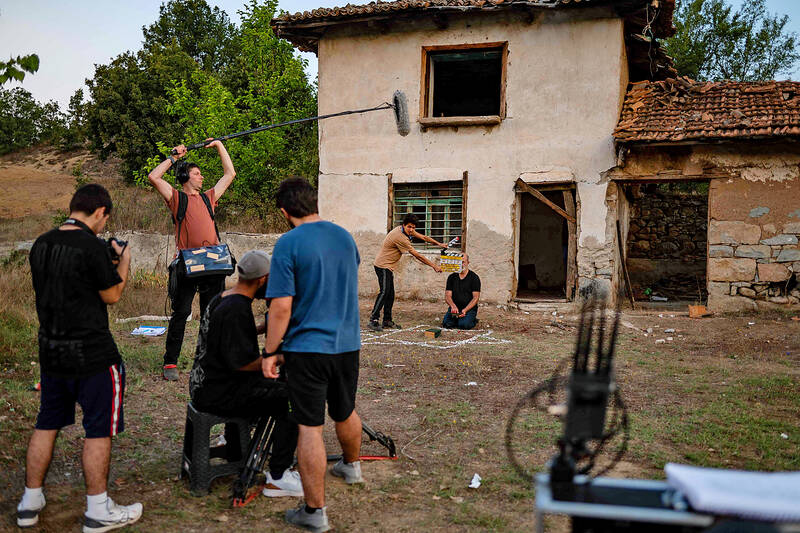
Photo: AFP
“At the end of the day, I try to produce films with as few technical issues as possible,” Kuru said between scenes of Muhr-u Musallat 2 — Yasak Dugun (Sealed Invasion 2 — Forbidden Wedding).
Filming many of the scenes in the dark helps.
“The color palette of horror movies is not as varied, which allows filmmakers to shoot with cheaper cameras, less light and smaller crews,” Kuru said.
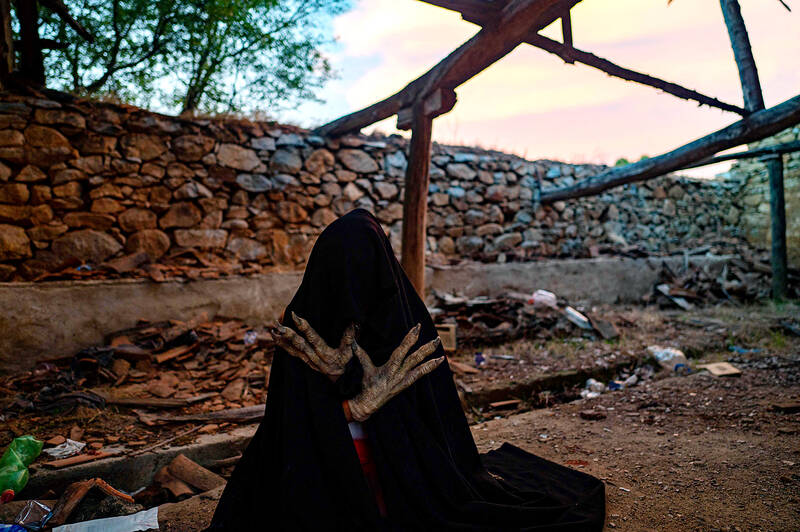
Photo: AFP
This year alone, 60 new homegrown horror movies are to hit screens in Turkey, where demand for entertainment has not waned despite — or maybe because of — the economic crises gripping the country.
Few horror films were made until the 1990s, their growth coinciding with the rise of Turkish President Recep Tayyip Erdogan’s Islamic-rooted Justice and Development Party.
Its coming to power in 2002 after decades of more secular governments helped let the genie out of the bottle, with more religious Turks — and plenty of secular ones — lapping up superstitious tales that were previously frowned on.
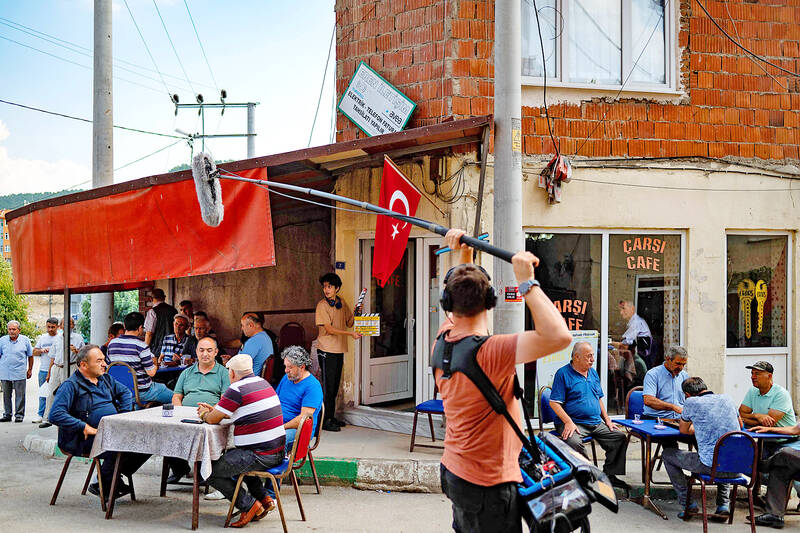
Photo: AFP
Film critic Gizem Simsek Kaya said there might be a link between the horror boom and broader social shifts in Turkey.
“The drive to brush aside superstition and come closer to science [of modern Turkey’s founders] began to regress in the late 1990s,” Kaya said.
Religious-themed horror movies became popular with Buyu (The Spell) in 2004, and reached an even bigger audience with the launch of the big-budget Dabbe series in 2006.
Director Hasan Karacadag made six Dabbe films, the last in 2015, breaking Turkish box office records.
Other blockbusters followed from the equally popular Siccin franchise from director Alper Mestci.
“Some Islamic tendencies and the rising tide of conservatism play a role in this,” Kaya said.
Turkish horror films mostly revolve around jinns or genies — potentially mischievous spirits that are a part of Islamic myths and theology.
This can be tricky for makeup artists like Yesim Vatansever.
Not only are genies supposed to be invisible, but there are also more than 70 types, making depicting them a challenge.
“It would be much easier to visualize, say, an alien,” Vatansever said.
Kaya, who teaches at Istanbul Kultur University, said that vampire movies do not work in Turkey because of religious sensitivities.
The idea of the living dead “in Islam is equal to committing shirk,” or the sin of idolatry, she said.
It might not have helped either that the inspiration for Dracula, the medieval Romanian ruler Vlad the Impaler, got his gory nickname from impaling Turks.
Ghosts and zombies also have issues.
“In Islam, the dead body is only seen covered in a shroud. When you try to resurrect something, it has to remove the shroud and walk naked,” Kaya said.
In one movie, a resurrected man who threw off his shroud put on some trousers he found on the street, she said.
“The moment he did that, the movie turned into a comedy,” she said.
These limitations can make Turkish horror movies look dreadful, she said.
“They are shot in a few days, the equipment is poor, and the film can come out blurry,” she said.
“I had never seen the words ‘error code’ accidentally appear in a movie” until it turned up in a Turkish horror flick this year, she said.
Screenwriter Ozlem Bolukbasi conceded that the films were not cinematic masterpieces.
“The budgets and production values are not high,” she said.
“But do we still draw audiences? Yes, we do,” she added.
Back on set with the old man possessed by a jinn, local villagers had flocked to see the filming.
“It’s fun. The whole town is here at the moment,” said Huseyin Aydemir, who runs a local restaurant in Buyukorhan, near Bursa in northwestern Turkey. “A cemetery scene was shot here two days ago. The locals went to the scene hours before the film crew.”

RUN IT BACK: A succesful first project working with hyperscalers to design chips encouraged MediaTek to start a second project, aiming to hit stride in 2028 MediaTek Inc (聯發科), the world’s biggest smartphone chip supplier, yesterday said it is engaging a second hyperscaler to help design artificial intelligence (AI) accelerators used in data centers following a similar project expected to generate revenue streams soon. The first AI accelerator project is to bring in US$1 billion revenue next year and several billion US dollars more in 2027, MediaTek chief executive officer Rick Tsai (蔡力行) told a virtual investor conference yesterday. The second AI accelerator project is expected to contribute to revenue beginning in 2028, Tsai said. MediaTek yesterday raised its revenue forecast for the global AI accelerator used
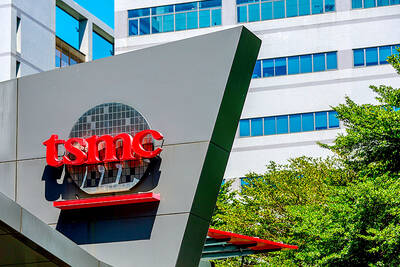
Taiwan Semiconductor Manufacturing Co (TSMC, 台積電) has secured three construction permits for its plan to build a state-of-the-art A14 wafer fab in Taichung, and is likely to start construction soon, the Central Taiwan Science Park Bureau said yesterday. Speaking with CNA, Wang Chun-chieh (王俊傑), deputy director general of the science park bureau, said the world’s largest contract chipmaker has received three construction permits — one to build a fab to roll out sophisticated chips, another to build a central utility plant to provide water and electricity for the facility and the other to build three office buildings. With the three permits, TSMC

TEMPORARY TRUCE: China has made concessions to ease rare earth trade controls, among others, while Washington holds fire on a 100% tariff on all Chinese goods China is effectively suspending implementation of additional export controls on rare earth metals and terminating investigations targeting US companies in the semiconductor supply chain, the White House announced. The White House on Saturday issued a fact sheet outlining some details of the trade pact agreed to earlier in the week by US President Donald Trump and Chinese President Xi Jinping (習近平) that aimed to ease tensions between the world’s two largest economies. Under the deal, China is to issue general licenses valid for exports of rare earths, gallium, germanium, antimony and graphite “for the benefit of US end users and their suppliers
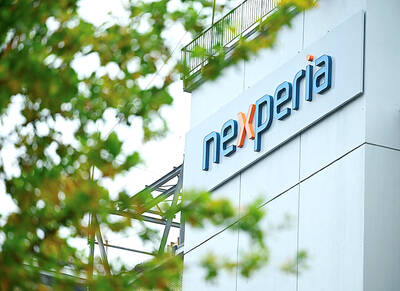
Dutch chipmaker Nexperia BV’s China unit yesterday said that it had established sufficient inventories of finished goods and works-in-progress, and that its supply chain remained secure and stable after its parent halted wafer supplies. The Dutch company suspended supplies of wafers to its Chinese assembly plant a week ago, calling it “a direct consequence of the local management’s recent failure to comply with the agreed contractual payment terms,” Reuters reported on Friday last week. Its China unit called Nexperia’s suspension “unilateral” and “extremely irresponsible,” adding that the Dutch parent’s claim about contractual payment was “misleading and highly deceptive,” according to a statement